All across the United States, grade school children learn about “Rube Goldberg Machines,” designing and building them for STEM competitions and fairs.
But those students learn far less about the man behind the machines: Rube Goldberg, himself. After all, his iconic machines are just a small part of his life’s work.
Reuben Lucius “Rube” Goldberg, was an illustrator, cartoonist, author, inventor, and sculptor born in San Francisco in 1883 toGerman Jewish immigrants. He was creative as a kid, but his parents discouraged his love for drawing, so when he graduated from UC Berkeley in1904, it was as an engineer rather than an artist.
His career as an engineer, however, lasted only a year before he moved back to drawing—and particularly cartoons—working first for theSan Francisco Bulletin and then for a variety of newspapers in New York.By 1915, he was a renowned and prolific artist.

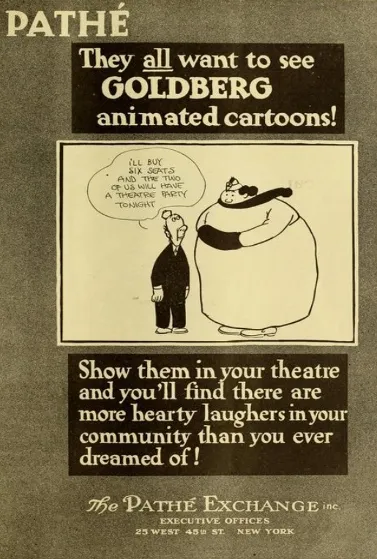

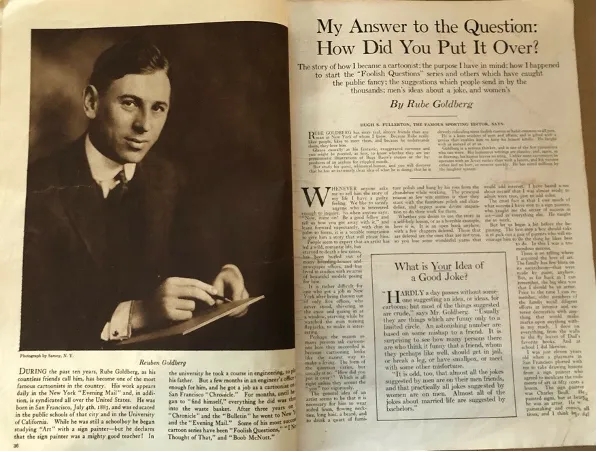
Goldberg’s Art Wasn’t All Fun & Games…
Few people associate Goldberg with serious work, but Goldberg’s political cartoons raised the standards for his craft, and in 1948he won the Pulitzer Prize in editorial cartooning for his “Peace Today” panel, which illustrated the fear around rising Cold War tensions and the potential for the atomic bomb to bring us all to the brink of disaster.
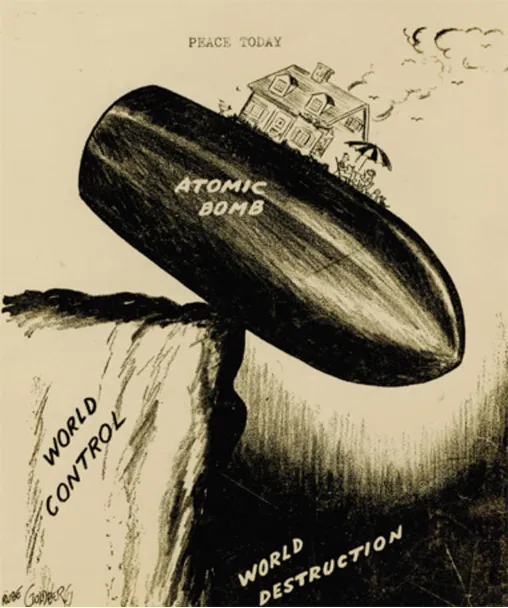
Below, you can see earlier political statements in two advertisements he drew for the Philco Corporation: “Rube Goldberg’s Latest WarMachine” features Hitler, Mussolini, and Hideki Tojo being shot out of a cannon, and “Three Blind Rats” positions the same fascist leaders as rats.
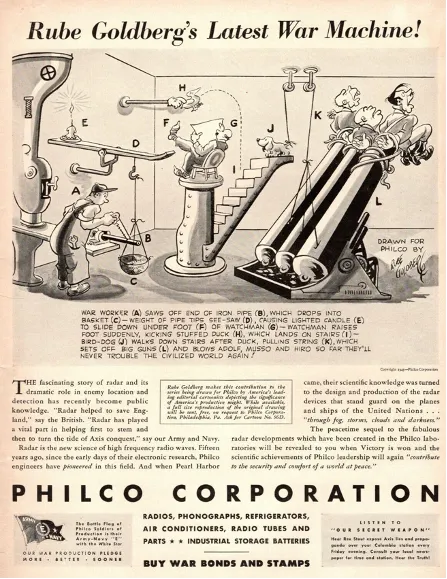
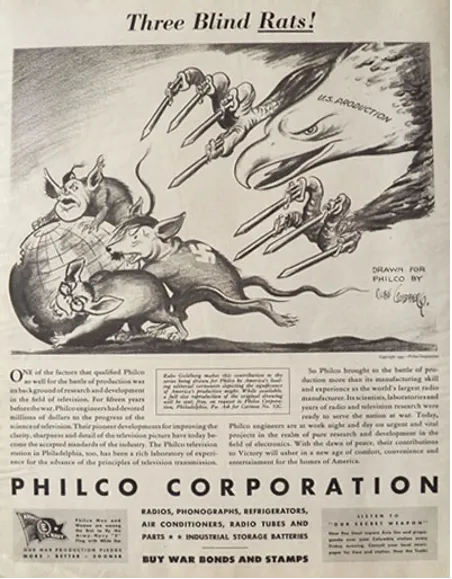
His newspaper cartoon, “Another Momentous Meeting Scheduled,” depicts Mussolini waiting for his buddy Hitler to join him behind bars, and “A New Word in Washington” implies that Roosevelt is surrounded in government by “yes men” unwilling to challenge him.
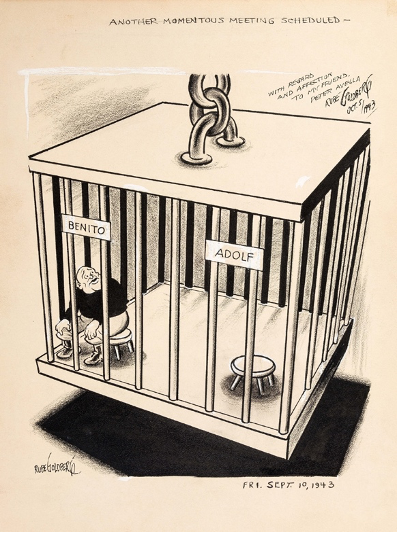
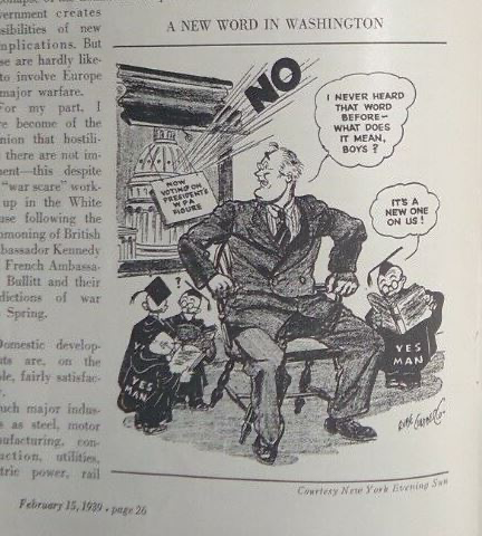
A far cry from the frivolity he is known for, his political cartoons, in fact, earned him so much hatred from those with differing political views that he insisted his two sons change their own names for safety.
…But Most of It Was
On a lighter note, most of Goldberg’s legacy is defined by his humor—most prevalently the complex machines he designed to do such simple tasks as brushing teeth or taking photos. Those machines were featured in aSunday Funnies comic strip that ran from 1914 to 1964, in which Professor Lucifer Butts presents and explains his inventions. Here are a few examples, from the comic strip and other publications and merchandise:
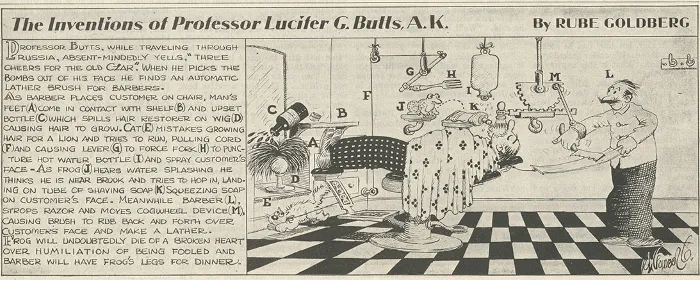
Ads for Smith Corona, US Steel, and The International NickelCompany featuring Professor Butts’s machines:
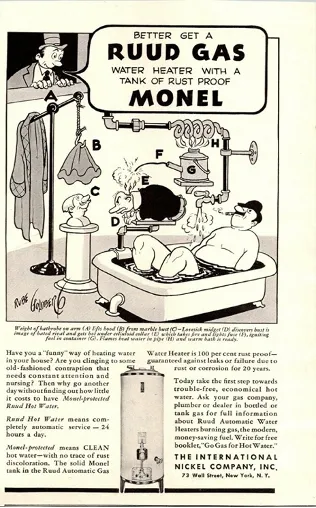

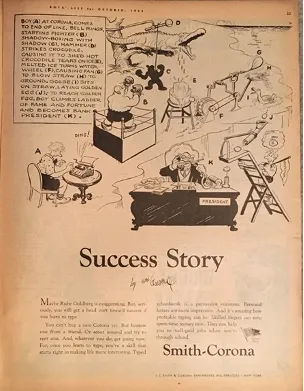
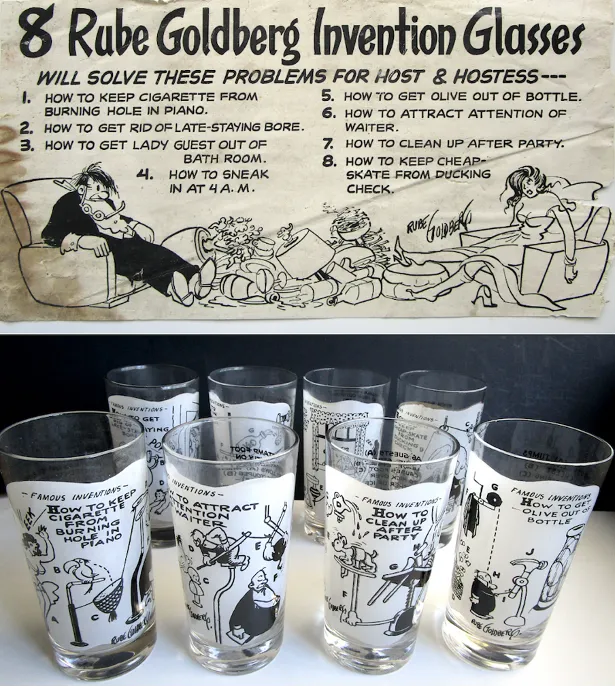
This next cartoon is particularly special to me, as it was included in a yearbook for Captstan, a WWII program of classes for naval offers who were being brought back in and retrained for active duty. My cousin, Benjamin Philipson, participated in this program and is featured in this yearbook right alongside work by Rube Goldberg (as well as Dr. Seuss and others).

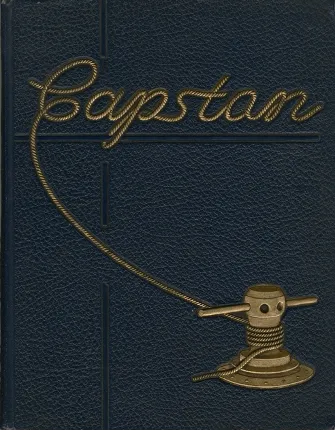
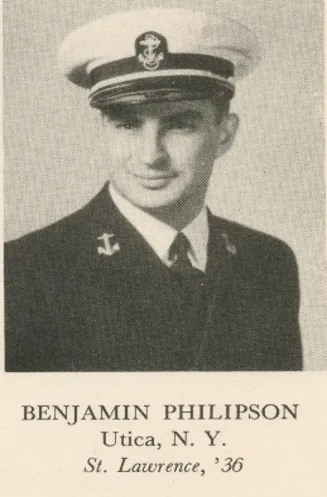
Boob McNutt
Boob McNutt was another Goldberg character, the star of acomic strip that ran in syndication from 1918 to 1934. Boob wasn’t known for being the sharpest tool in the shed, but he sure was lovable.
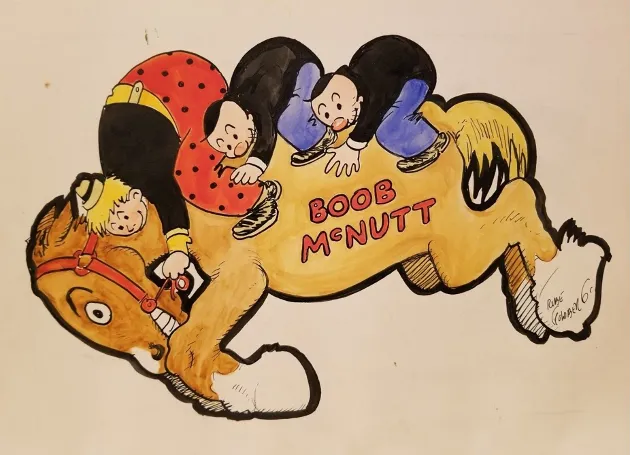
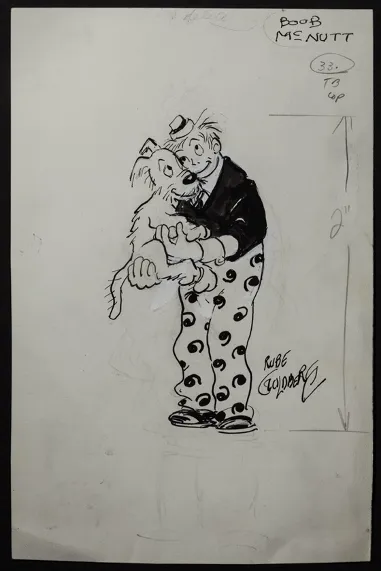
Below are two Boob McNutt toys, one tin and the other cloth.
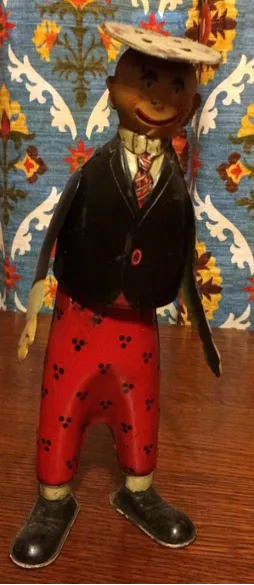
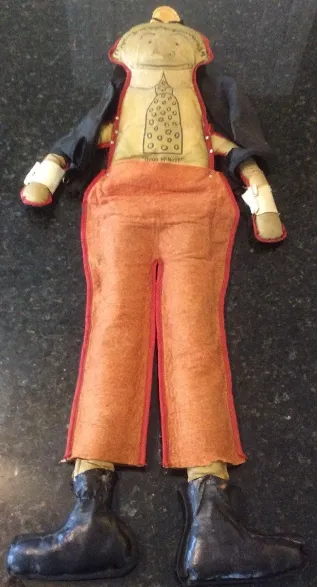

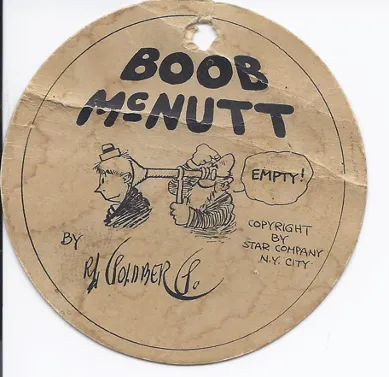
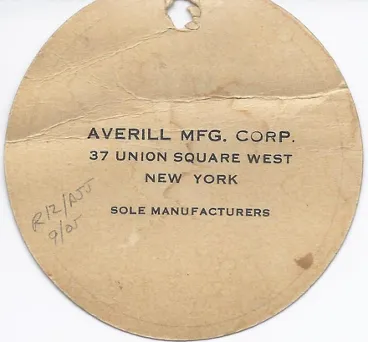
I’m the Guy
You’ve heard the formula: "He’s the guy who put the [blank] in [blank]." Well, Goldberg capitalized on that formula, with punny variations that he published in comic strips and put on merch like cigarette carton buttons, even writing and recording a comic song called “I’m the Guy.”
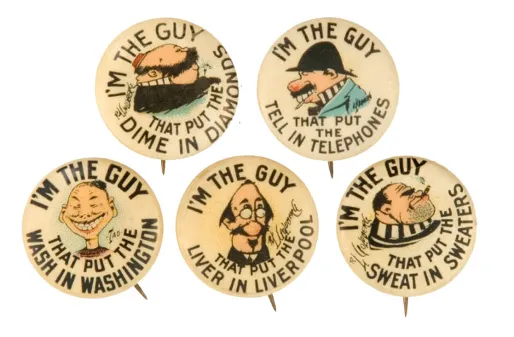
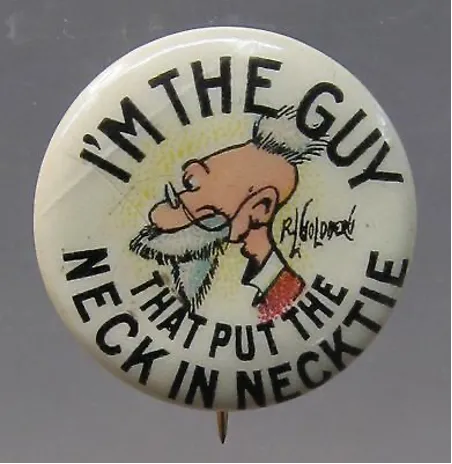
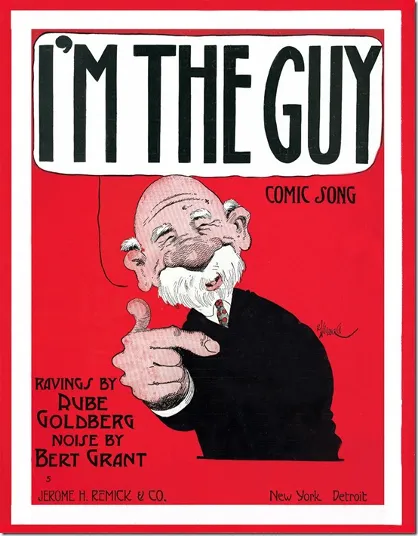
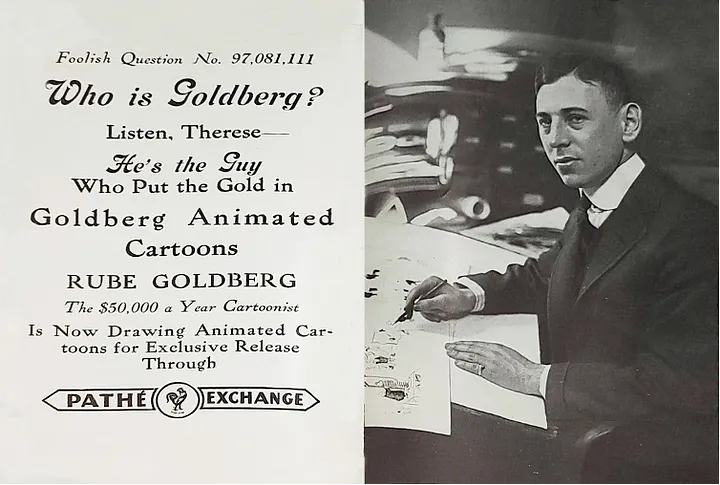
Foolish Questions
Perhaps Goldberg’s best-known series, behind the inventions, is his “Foolish Questions.” His sketches of people asking obvious questions and getting ridiculous answers made their way to postcards, magazines, and even card games, providing “A million dollars worth of laughs for thirty-five cents,” as one game insert (pictured below) puts it.
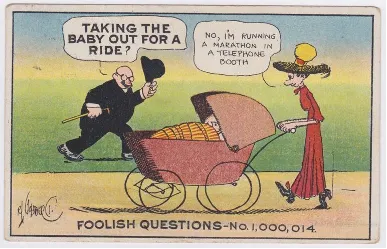
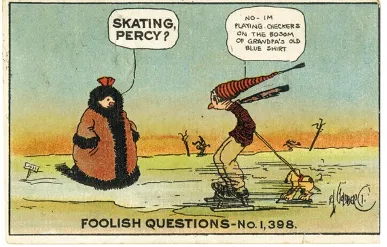
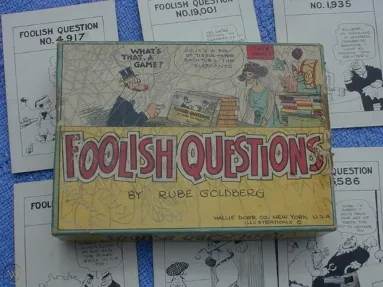
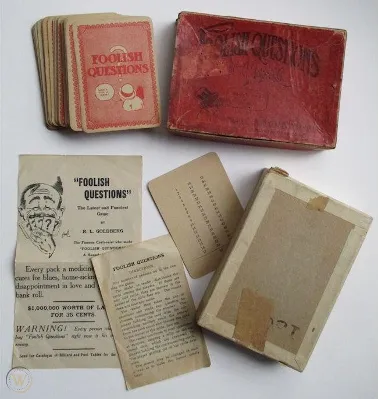
Goldberg the Sculptor
In his later years, Goldberg turned to sculpting, once again proving he was a man of many talents as he crated likenesses of countless public figures. I have two of his sculptures in my collection, and I consider myself lucky.
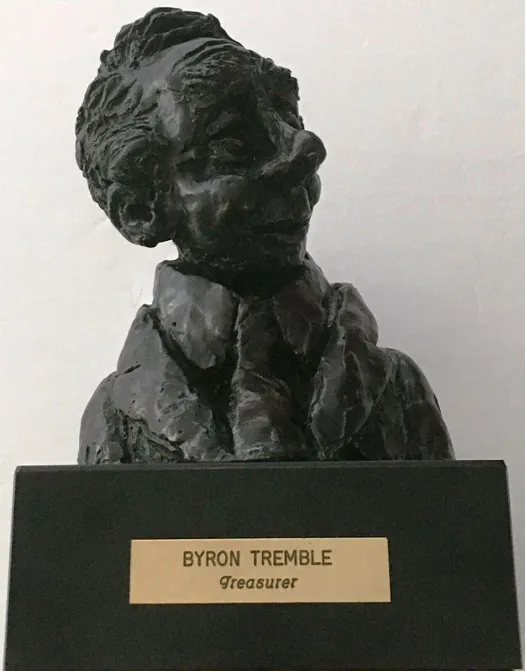
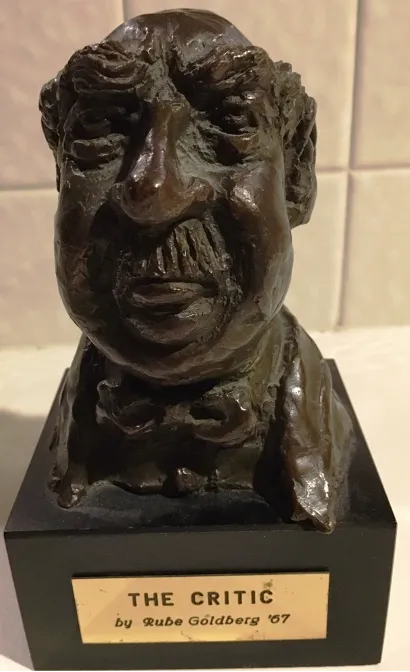
Dodge (yes, the car company) featured Goldberg’s sculpture in their corporate magazine in 1970, the year he died.
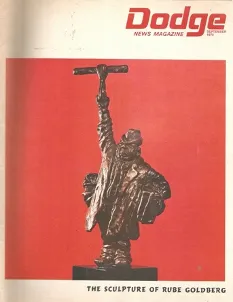
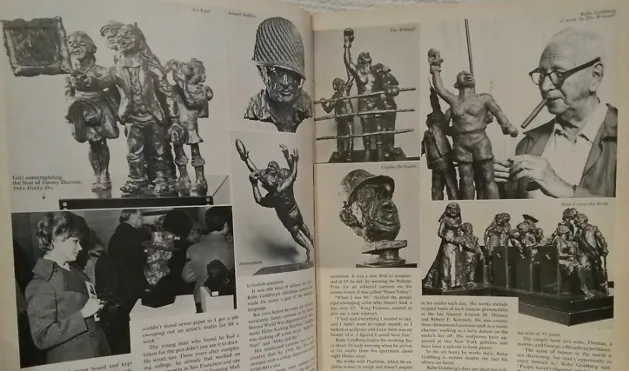
Goldberg’s Legacy
More than 50 years after his death, Goldberg is still very much a part of our culture.
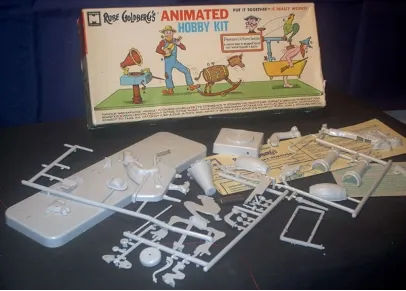
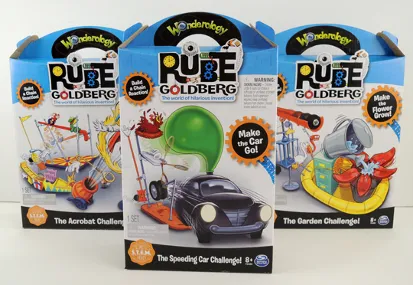
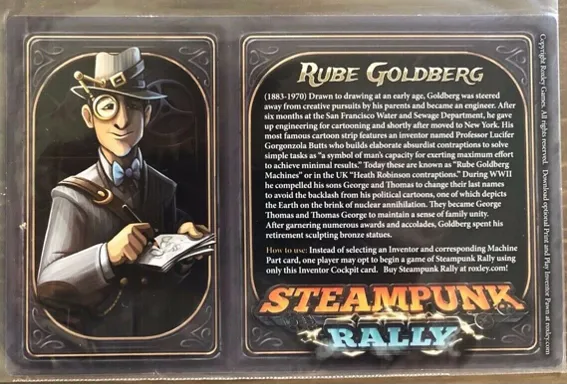
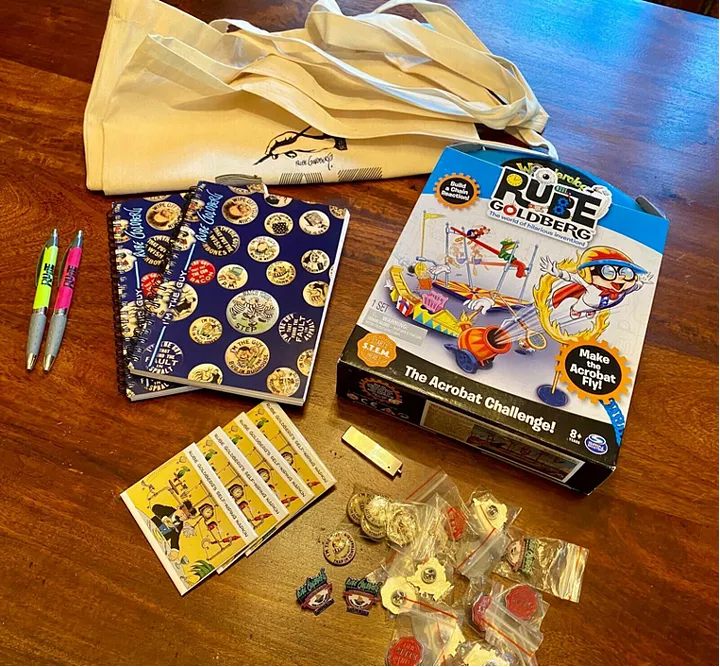
And, most exciting for this philatelist, the commemorative stamp that was released in 1995 as part of the USPS’s “Comic Strip Classics” series.

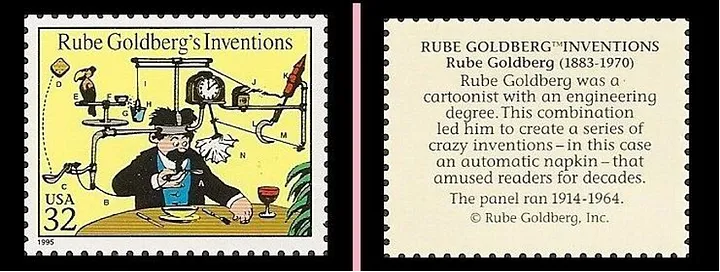
Remembering a Jewish American Icon
This article just scratches the surface of Goldberg’s accomplishments and legacy. For more, I encourage you to watch my 2022 presentation to the Austin Lion’s Club.
